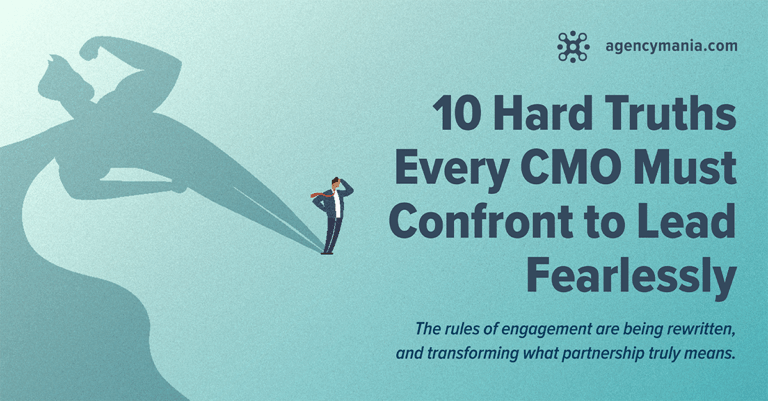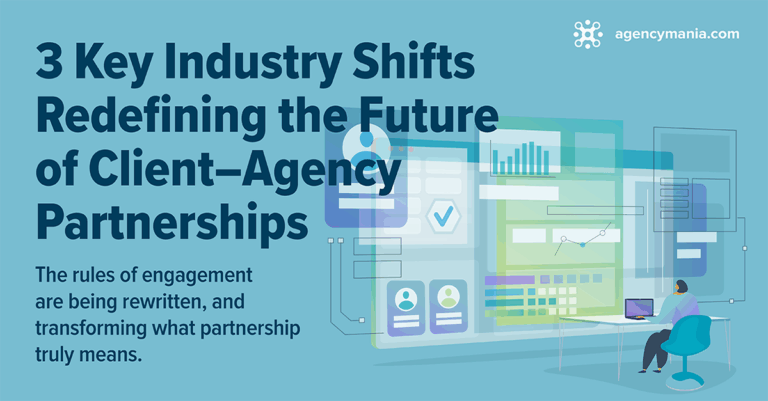Three major roadblocks to highly effective marketing and collaborative client/agency partnerships… and why brand advertisers should talk about them.
— Read our article posted on Producers & Procurers iQ —
— Read our article posted on LBB Online —
Unless you live under a rock, by now you probably heard the most popular of the eight original songs by Lin-Manuel Miranda, “We Don’t Talk About Bruno” from Disney’s animated feature film, Encanto. The Latin pop and salsa song is one of the best Disney songs, and apparently the only Disney song of the 21st-century to reach number one on the US Billboard Hot 100. Within a week after the launch on Disney+, the song reached number one on Spotify (the music and video generated 30+ million views and 10+ million views in its first week, respectively).
What’s so special about this song? The Encanto animated character, “Bruno,” has a magical ability: he can foresee visions of the future, and sadly, as the song illustrates, many of those happen to be negative events. As a “Bruno” myself, let’s see if I can predict some of the possible events marketers and agencies will face in years in come unless they get addressed head on. Our industry has never experienced so much change and pressure than it has in the past two years, offering opportunities to rethink the fundamentals and come up with new ways to drive value. I can think of three important roadblocks that deserve the attention of marketing leaders and that we don’t talk about quite enough:
We don’t talk about… RISING TALENT COSTS.
The “great resignation” phenomenon changed the talent landscape for years to come in advertising, as in many other professions. The consequences have been felt by organizations around the country, desperate to hire or simply hold onto their talent. As the supply shrinks and the demand accelerates, naturally we see significant inflation in talent costs. Marla Kaplowitz, President & Chief Executive Officer of the American Association of Advertising Agencies (4A’s) recently stated, “The increasing cost of labor in this highly competitive talent marketplace will affect how agencies price and service a client’s business.” Arguably, it already has. The primary expense category for agencies is talent, and those costs get passed on to brand advertisers in some way, based on whatever compensation agreement is in place. So, brands are paying more today for that talent than previously. Agencies are also experimenting with other means of employee retention such as greater flexibility, more autonomy, and stronger health benefits, but those ultimately add up and expenses are on the rise.
What can advertisers do about it? Here are a few suggestions:
- (Re) Evaluate talent needs: Having the right talent means applying special consideration to evaluating people resources based on scopes of work and project requirements. Is the staff seniority mix appropriate? Is it too heavily skewed towards senior resources? Should you consider a leaner, more flexible structure or a balanced mix of experts and less experienced staff to offset these cost increases without impacting the quality of the work? Should some of these agency resources be retained while others may be determined on a need-based project-basis? It’s time to rethink how we staff to deliver sustained value at reasonable costs.
- Conduct timely cost reviews: This is an opportunity to have open and direct dialog with your agency about the rising costs they are experiencing and how it might impact their ability to staff your account or what implications this may have on their pricing. Use your existing Quarterly Business Reviews (QBRs) or other agency planning events to discuss short-term implications of rising talent costs. Agree on what might constitute reasonable cost of labor increases (if any) and what efficiencies can be realized to offset them, such as fewer rounds of revisions, fewer meetings, improved decision making, or leaner production processes. Rising costs can be a catalyst to identify current inefficiency sources and do something about them.
We don’t talk about… POOR CLIENT GUIDANCE.
Sadly, unlike rising talent costs, poor client guidance is not a new topic. Yet, weak or insufficient client direction during annual scope of work planning or while briefing agencies is still the number one contributing factor to operational inefficiencies, loss of productivity, and excessive costs. A recent Association of National Advertisers (ANA) study found that nearly 60% of marketing executives claim that 30% of their total budget is lost to inefficiencies. As a prior client, I witnessed it firsthand with my agencies. When agencies are being provided insufficient guidance, they do their best to read between the lines, investing time and energy trying to fill in the blanks. Sometimes, the best ones do so quite successfully. But often, they miss the mark, by a narrow or a large margin, going back to the drawing board and, in the process, wasting precious resources. In these highly competitive times, no marketing organization can justify this level of inefficiency from poor client guidance.
What can advertisers do about it? Here are a few suggestions:
- Operate a rigorous scope planning process: Most advertisers have a robust financial planning process as resources get allocated to support strategic priorities. Expressing priorities as granular scopes of work can be challenging for some. Brands should create greater rigor into building a collaborative scope of work process that involves agencies early and allows both parties to align on the work and the resource requirements, no matter the choice of compensation model. These processes require a strong taxonomy, data access for back-to-back scope reviews, and timely reporting to facilitate negotiations and year-long reconciliations.
- Improve the consistency and quality of briefing: When it’s time to engage with the agency, marketers will issue a more detailed brief that is a natural continuation of the previously held scope of work process. Agencies need as much as clarity and information as possible to get started. The briefing process is unfortunately not receiving the attention it deserves by organizations still allowing marketers to brief agencies in an inconsistent and suboptimal manner. Thankfully, I’ve seen organizations tackle that issue and institute a formal, consistent briefing process with consistent data input to the agency and adequate versioning control and approvals to get alignment before resources gets tapped. Clients and agencies both benefit from this approach.
We don’t talk about… LACK OF PROACTIVE AGENCY RELATIONSHIP MANAGEMENT.
Here is another possible event we don’t talk about enough: the deterioration of client/agency relationships fueled by increasingly frequent account reviews that could have been avoided. That’s right: I am referring here to the countless situations where a client chooses, out of despair or necessity, to formally put their account in review, because they feel that they have run out of options. Some reviews are totally justified, originating from strategic priorities, or triggered by a corporate mandate. But too many reviews still result from a lack of a proactive oversight and structured management of the relationship. I see two primary reasons for this unfortunate turn of event: either the client never successfully formalized the process of reviewing the work and relationship on a regular basis. Or they do so but fail to make the process insightful or actionable and never fully realize its intended benefits.
What can advertisers do about it? Here are a few suggestions:
- Evolve your performance evaluation program: By now, most companies have put in place some process for evaluating their agencies. However, too many companies still handle this process as a due diligence prerogative and come up short of turning this valuable exercise into a meaningful exchange of feedback that can strengthen the work relationship. Make sure you are asking the right questions from the right participants and drawing the right conclusions. A performance evaluation program can be improved by getting better participation, asking better questions, and equipping teams with insight they can use to drive improvements.
- Focus more time and attention on action planning: The value of an agency performance evaluation program is directly proportional to the parties’ ability to drive change. Change happens when mutual commitments are documented and honored. Companies should put more rigor in the action planning phase of evaluation programs, identifying specific actions, documenting them, and monitoring their progress throughout the year, so meaningful change can be implemented.
The Encanto character, “Bruno,” warned us: “It looks like rain.” We need to face these realities. We don’t talk enough about the rising talent costs, poor client guidance, and lack of proactive agency relationship management that negatively impact our industry…. No, no, we don’t, but we certainly should. We should talk about these relationship roadblocks if we are to thrive as an industry and deliver better work in partnership with our agencies. Yet, talking about these issues is only half the battle. The other half is doing something about them. Consider this an invitation to act.
By Bruno Gralpois, Author/Speaker, Thought-provocateur, Client/Agency Guru, Entrepreneur, Innovator
February 11, 2022








